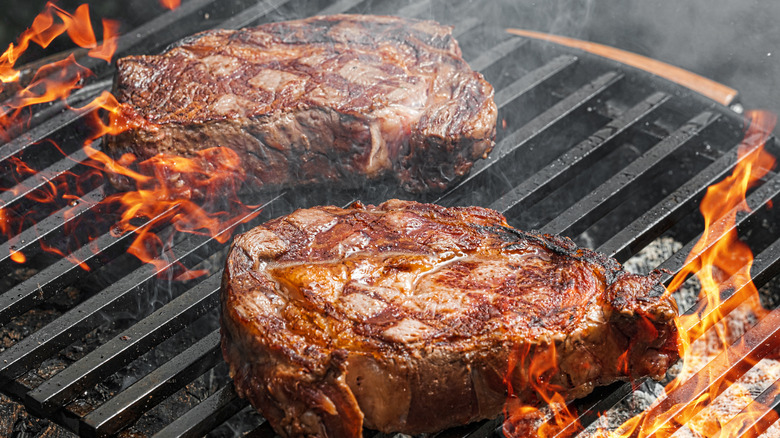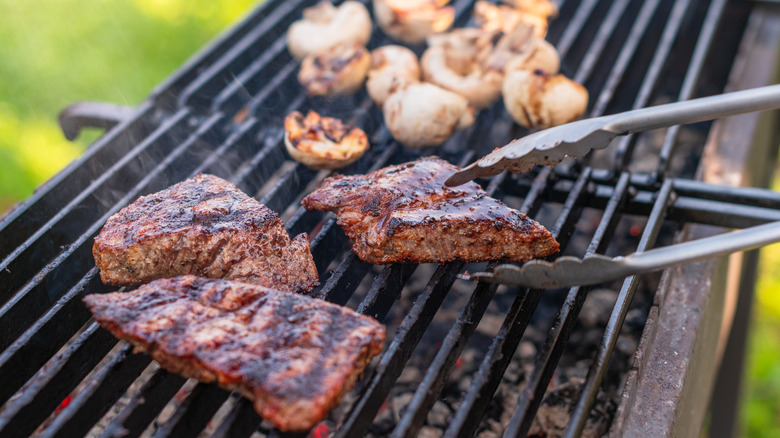When Your Steak Reaches This Point, It's Ready To Be Flipped
There is a lot of debate about the very best way to grill a steak. How long do you cook it? Does it need to rest before grilling? And, perhaps most controversially, when should you flip the steak? While some experts like food scientist Harold McGee (via Wonder How To) argue that it's best to flip a steak repeatedly on the grill, others, including My Chicago Steak and grill expert Jennifer Chandler (via The Kitchn) prefer the one-flip method.
According to Chandler, steaks are best when cooked over high heat — about 450 degrees Fahrenheit — on a clean and oiled grill, which she states creates the same effect as a non-stick pan. The grilling pro suggests that one flip is all it takes to perfectly grill a well-seasoned steak because the meat cooks so quickly. My Chicago Steak notes that the single flip should be done about halfway through the cooking time to make sure the meat is cooked evenly on both sides as all the heat moves from the grill up into the food. Finally, Chandler argues that more flipping isn't necessary since it could prevent the outside of the meat from developing a well-seared crust.
The perfect time to flip
So how do you know when the meat is ready to be flipped if you're only doing it once? While the My Chicago Steak theory of "halfway through" is the correct answer, that can be hard to gauge as "halfway" varies based on the cut and thickness of the meat and your desired cook temperature (as explained by Allen Brothers).
Thankfully, there is another way to estimate this based on feel without having to worry about setting a timer. Chandler tells The Kitchn that, similar to searing meat in a pan, you can tell the steak is ready to flip when it releases easily from the grill. To do this, simply grip the steak with your grill tongs and attempt to lift it up. If it lifts up without sticking, it's good to flip!
Chandler stresses the importance of using tongs to flip the meat instead of a grill fork to avoid releasing moisture from the meat. As CNBC explains in an interview with Hugh Mangum, chef at New York City's Mighty Quinn's barbecue restaurant, "if you pierce the meat, you kill the meat. You let all the juices out."

